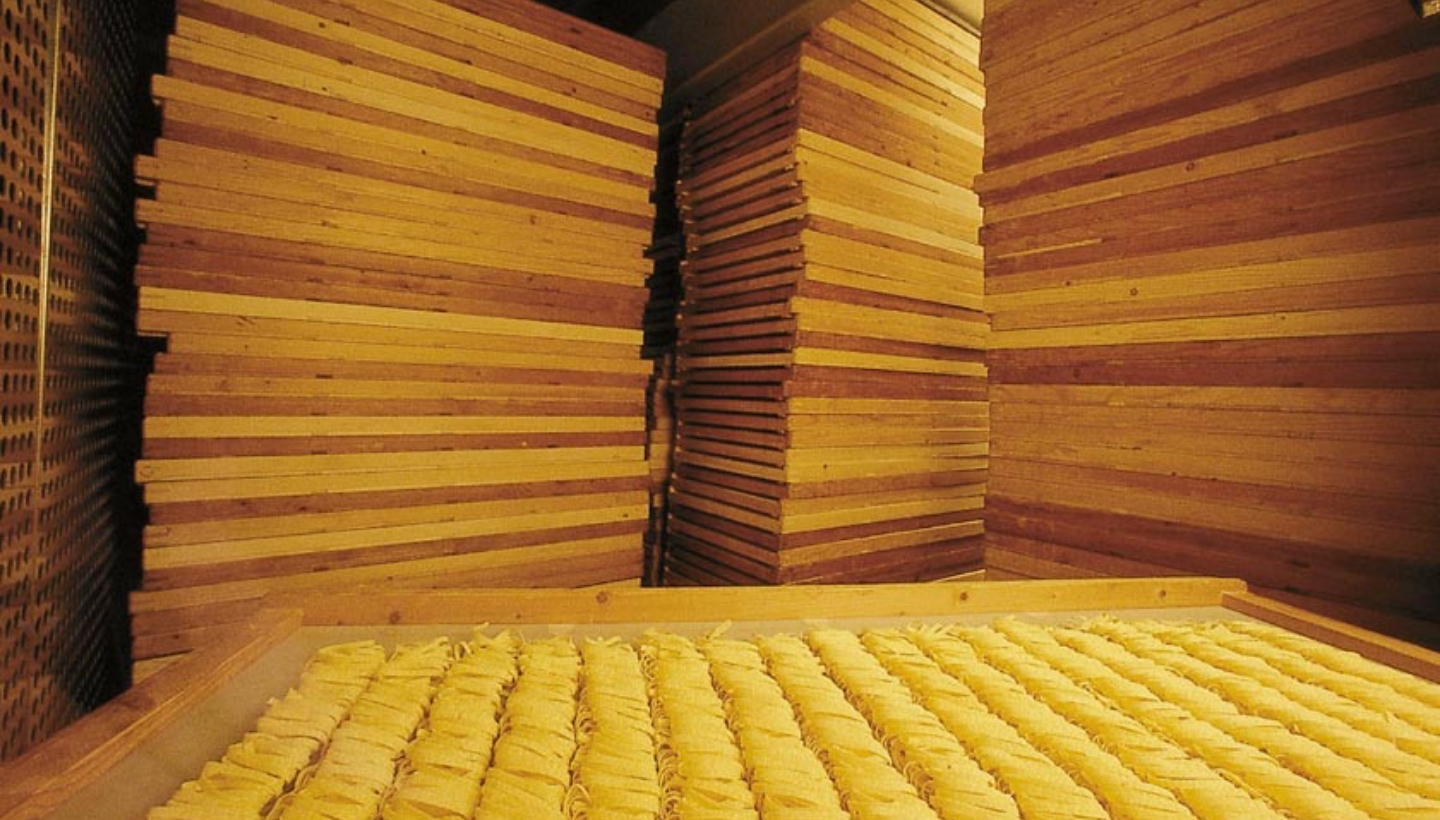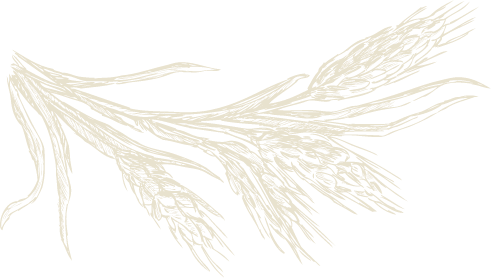Artisanal Production:
How Our Pasta Is Born
The artisanal pasta from Pastificio Cocco is the result of ancient know-how and deep respect for tradition. Still today, our pasta is made using original machinery from the early 1900s—restored and brought back to life by Cav. Giuseppe Cocco himself.
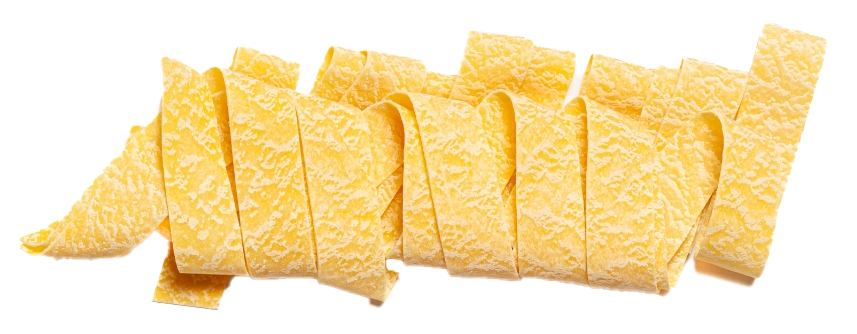
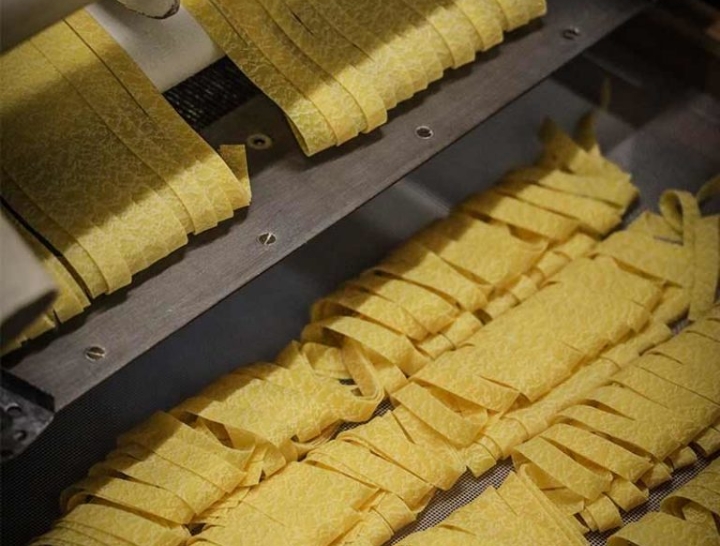
Vintage Machinery and the Matassatrice
Among the most unique tools is our historic matassatrice, used to produce matassa-shaped formats—from Spaghetti a Matassa to other varieties made just as they were in the past. Before the more modern “on cane” method became widespread, long pasta was often shaped into matasse (bundles) to be dried naturally in the sun.
Slow and Cold Kneading
Our dough is made slowly and at low temperatures by combining high-quality durum wheat semolina with the pure spring water of Fara San Martino—or with free-range eggs in the case of egg pasta. This method preserves the nutritional and organoleptic properties of the raw ingredients, ensuring the pasta delivers authentic flavor and ideal texture.
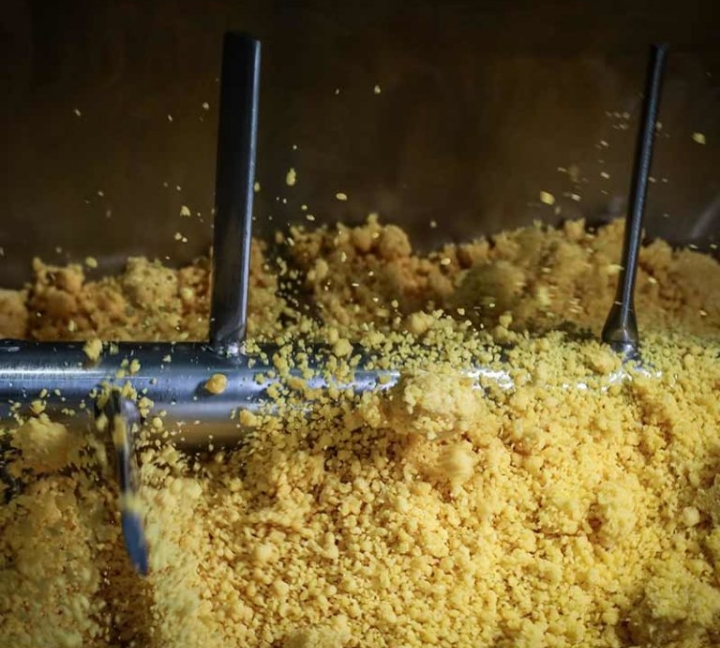
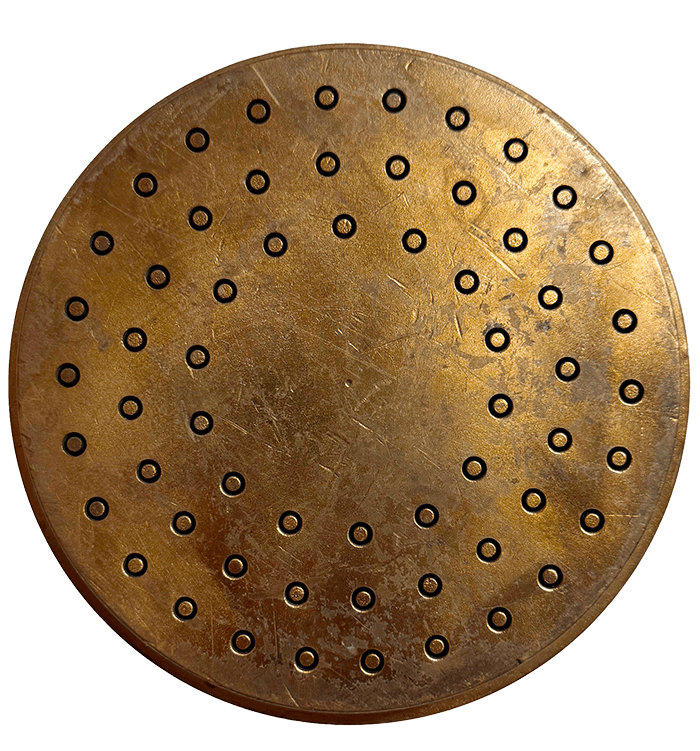
Single-Hole Bronze Dies and Double-Die Technique
Once the dough is ready, it’s pushed through circular, single-hole bronze dies—a rare, old-world technique. “Single-hole” means that the dough enters through one large upper opening and exits from a single small outlet in the desired shape. These rare dies give the pasta its traditional rough surface, helping sauces cling beautifully and enhancing flavor.
For long pasta formats, we use another rediscovered traditional method: the double circular bronze die. Instead of using one large die, the dough passes through two smaller ones, allowing for higher and more stable pressure throughout production. This technique ensures uniform thickness and perfect cooking consistency, especially in formats like spaghetti.
It’s a small detail, but true quality lies in the details.
Low-Temperature Static Drying
The final and most delicate phase is slow drying: a traditional method that replicates old-fashioned sun drying. Using static dryers built from early 20th-century designs, our pasta is dried at low temperatures (between 46°C and 48°C) over much longer periods than in industrial processes.
Following these methods means taking more time and space, producing smaller batches, and preserving the true taste and character of pasta from the past.
